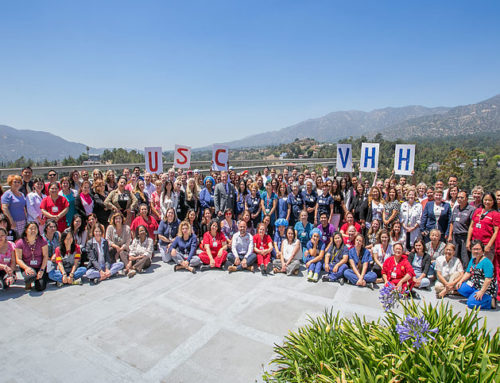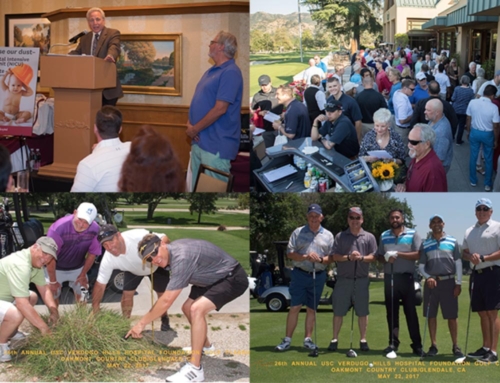When Charles Mason found his wife, Chris Mason, on the floor of their bedroom, unable to move the left side of her body, he recognized that she was probably having a stroke.
He also knew, after years of serving on the board of directors of USC Verdugo Hills Hospital (USC-VHH), that she needed to get to USC-VHH as quickly as possible because it was the closest certified stroke center.
Strokes occur when a blood vessel carrying oxygen to the brain is blocked by a clot or bursts. Getting medical help quickly is critical because the longer the brain is denied oxygen, the more likely it is to cause long term damage or disability.
Knowing that time is of the essence, USC-VHH has developed a system to see patients immediately and to coordinate with the stroke team at Keck Medicine of USC.
Charles Mason phoned USC-VHH from the ambulance, which set in motion a response at the hospital. When the team at USC-VHH gets a call that a stroke patient is on the way, they clear a computerized tomography (CT) scan room, free up an emergency room doctor to receive the patient and rapidly perform an initial evaluation.
They quickly evaluate the CT scan to determine what kind of stroke the patient is having and consult with the USC Stroke Team at Keck Medicine of USC to determine if the patient needs a higher level of care.
In Chris Mason’s case, the stroke team at USC-VHH determined that she was suffering an ischemic stroke, meaning there was a clot blocking a major artery in her brain. In coordination with the stroke team at Keck
Medicine they determined that she needed a clot-busting medication and an additional procedure that required she be transferred to Keck Hospital of USC.
Most of the stroke patients seen at USC-VHH, approximately 90 percent, can be handled by local physicians. In the rare cases that are sent for further evaluation or an additional procedures at Keck Hospital, another set of actions are in place to make sure that patient is again seen by doctors and treated quickly.
Before a life support ambulance picked up Chris Mason at USC-VHH, an alert went out to the cell phones of the stroke team at Keck Hospital, letting them know she was coming and to start preparations immediately. The team, consisting of a stroke neurologist, a neurosurgeon, a nurse, a radiation technologist, a stroke fellow and a resident, waited for her to arrive and then quickly took her for an advanced CT scan that looks at the blood vessels and brain, which could not be performed at USC-VHH.
The team felt Chris Mason would benefit from a procedure that would directly remove the clot from the blocked artery in her brain. The procedure is called a cerebral angiogram with thrombectomy and is performed by guiding a catheter from a large artery in the groin to the blocked artery in the brain using xray guidance and a specialized device that engages the clot and allows the physician to remove it from the brain.
The entire procedure lasted about 20 minutes and the device successfully removed the entire clot on the first attempt. Within minutes, Chris Mason was able to move the fingers in her left hand again. After two days of observation at Keck Hospital, Chris Mason walked out of the hospital on her own power and was sent home to do rehabilitation at USC-VHH.
“It was all quick, quick, quick,” says Chris Mason, who, two years after her stroke has slight difficulty with her left hand, but is grateful that is her only problem. “They were running at top speed to make this system that they had so painstakingly developed work. And it really did work.”
By Hope Hamashige





















